
My previous guide for digiKam involved the use of Task Scheduler. Today I’m offering a recommended and excellent alternative for installing the latest digiKam version via Portainer. digiKam is an advanced open-source digital photo management application that runs on Linux, Windows, and macOS. The application provides a comprehensive set of tools for importing, managing, editing, and sharing photos and raw files. In this step by step guide I will show you how to install digiKam on your Synology NAS using Docker & Portainer.
STEP 1
Please Support My work by Making a Donation.
STEP 2
Install Portainer using my step by step guide. If you already have Portainer installed on your Synology NAS, skip this STEP. Attention: Make sure you have installed the latest Portainer version.
STEP 3
Go to File Station and open the docker folder. Inside the docker folder, create one new folder and name it digikam. Follow the instructions in the image below.
Note: Be careful to enter only lowercase, not uppercase letters.
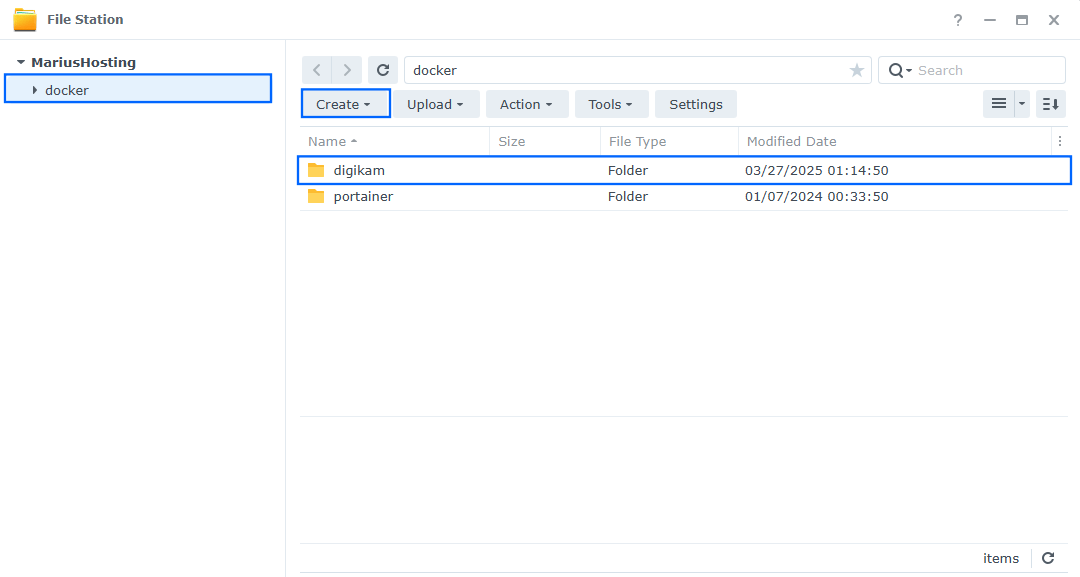
STEP 4
Log into Portainer using your username and password. On the left sidebar in Portainer, click on Home then Live connect. Follow the instructions in the image below.
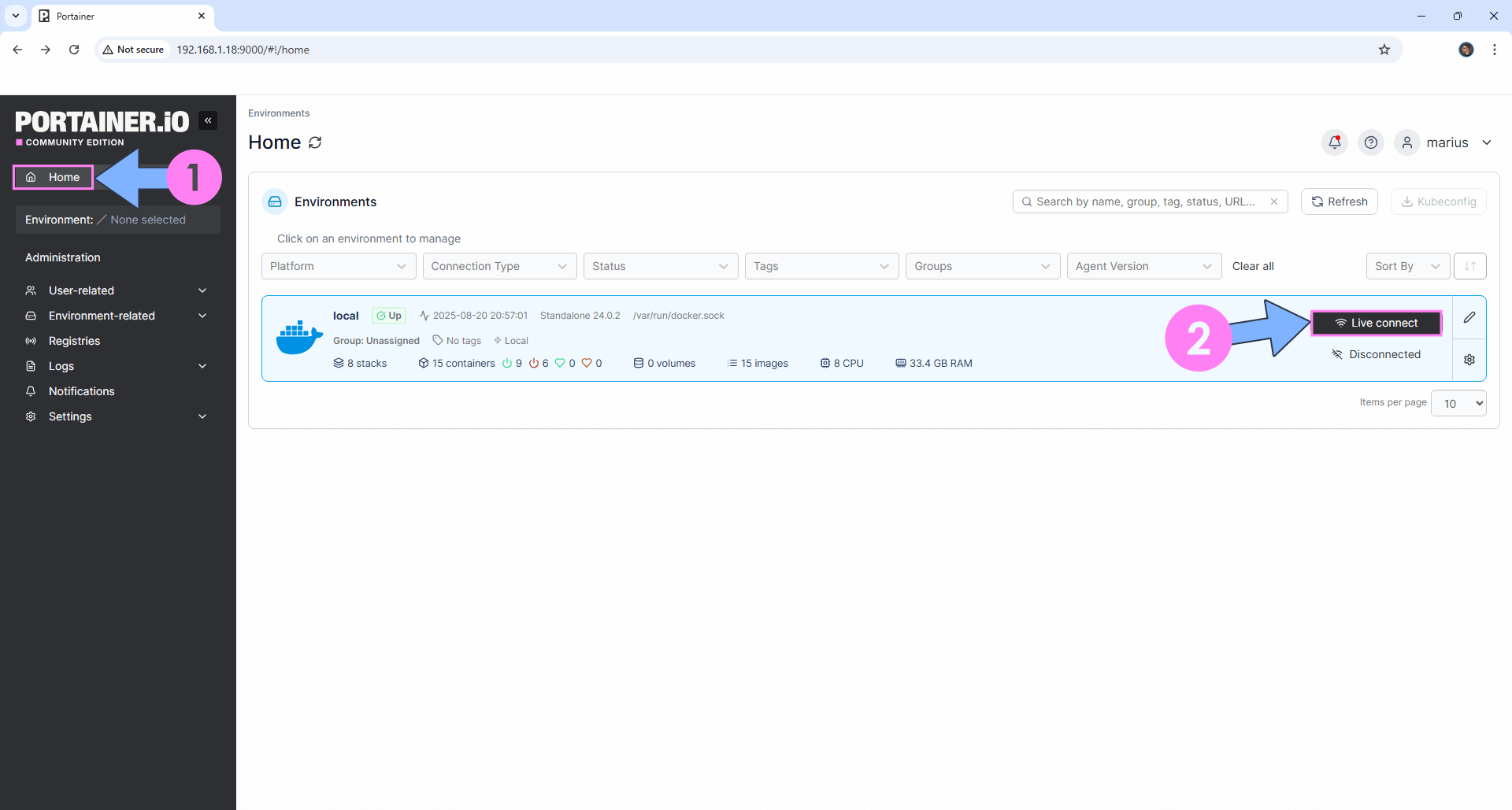
On the left sidebar in Portainer, click on Stacks then + Add stack. Follow the instructions in the image below.
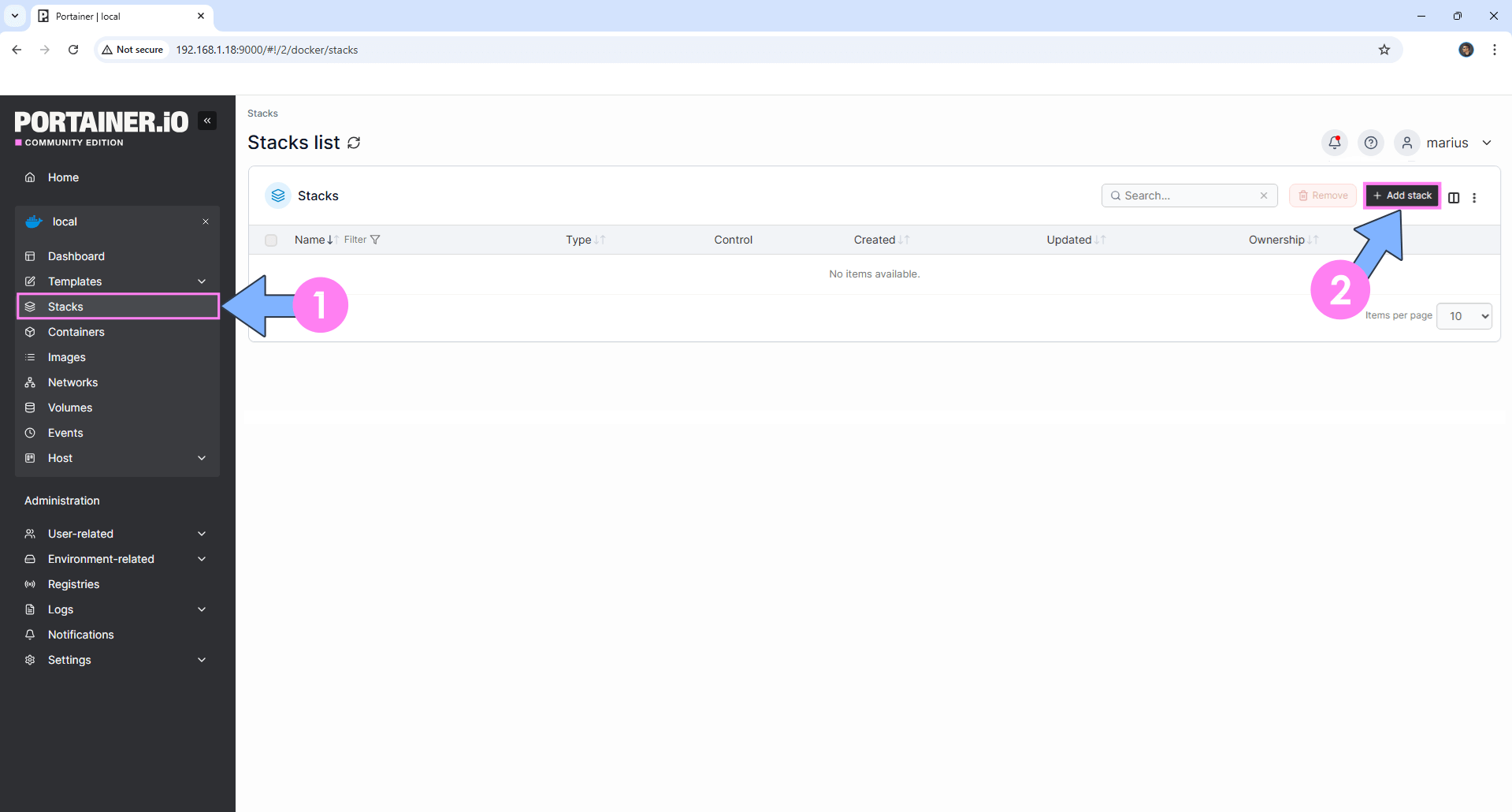
STEP 5
In the Name field type in digikam. Follow the instructions in the image below.
services:
digiKam:
container_name: digiKam
image: ghcr.io/linuxserver/digikam
healthcheck:
test: timeout 10s bash -c ':> /dev/tcp/127.0.0.1/3000' || exit 1
interval: 10s
timeout: 5s
retries: 3
start_period: 90s
security_opt:
- no-new-privileges:false
- seccomp:unconfined
ports:
- 3050:3000
- 3051:3001
volumes:
- /volume1/docker/digikam:/config:rw
environment:
CUSTOM_USER: marius
PASSWORD: mariushosting
TZ: Europe/Bucharest
PUID: 1026
PGID: 100
KEYBOARD: en-us-qwerty
restart: on-failure:5
Note: Before you paste the code above in the Web editor area below, change the value for CUSTOM_USER. Type in your own username. marius is an example for a username.
Note: Before you paste the code above in the Web editor area below, change the value for PASSWORD. Type in your own password. mariushosting is an example for a password. ⚠️Warning: Do NOT use passwords with special characters. ⚠️Warning: Do NOT use passwords with special characters.
Note: Before you paste the code above in the Web editor area below, change the value for TZ. (Select your current Time Zone from this list.)
Note: Before you paste the code above in the Web editor area below, change the value numbers for PUID and PGID with your own values. (Follow my step by step guide on how to do this.)
Note: Before you paste the code above in the Web editor area below, change the value for KEYBOARD and add your own keyboard layout. da-dk-qwerty is for the Danish keyboard, de-ch-qwertz is for the Swiss German keyboard, de-de-qwertz is for the German keyboard, en-gb-qwerty is for the English (UK) keyboard, en-us-qwerty is for the English (US) keyboard, es-es-qwerty is for the Spanish keyboard, fr-ch-qwertz is for the Swiss French keyboard, fr-fr-azerty is for the French keyboard, it-it-qwerty is for the Italian keyboard, ja-jp-qwerty is for the Japanese keyboard, pt-br-qwerty is for the Portuguese Brazilian keyboard, sv-se-qwerty is for the Swedish keyboard, tr-tr-qwerty is for the Turkish-Q keyboard.
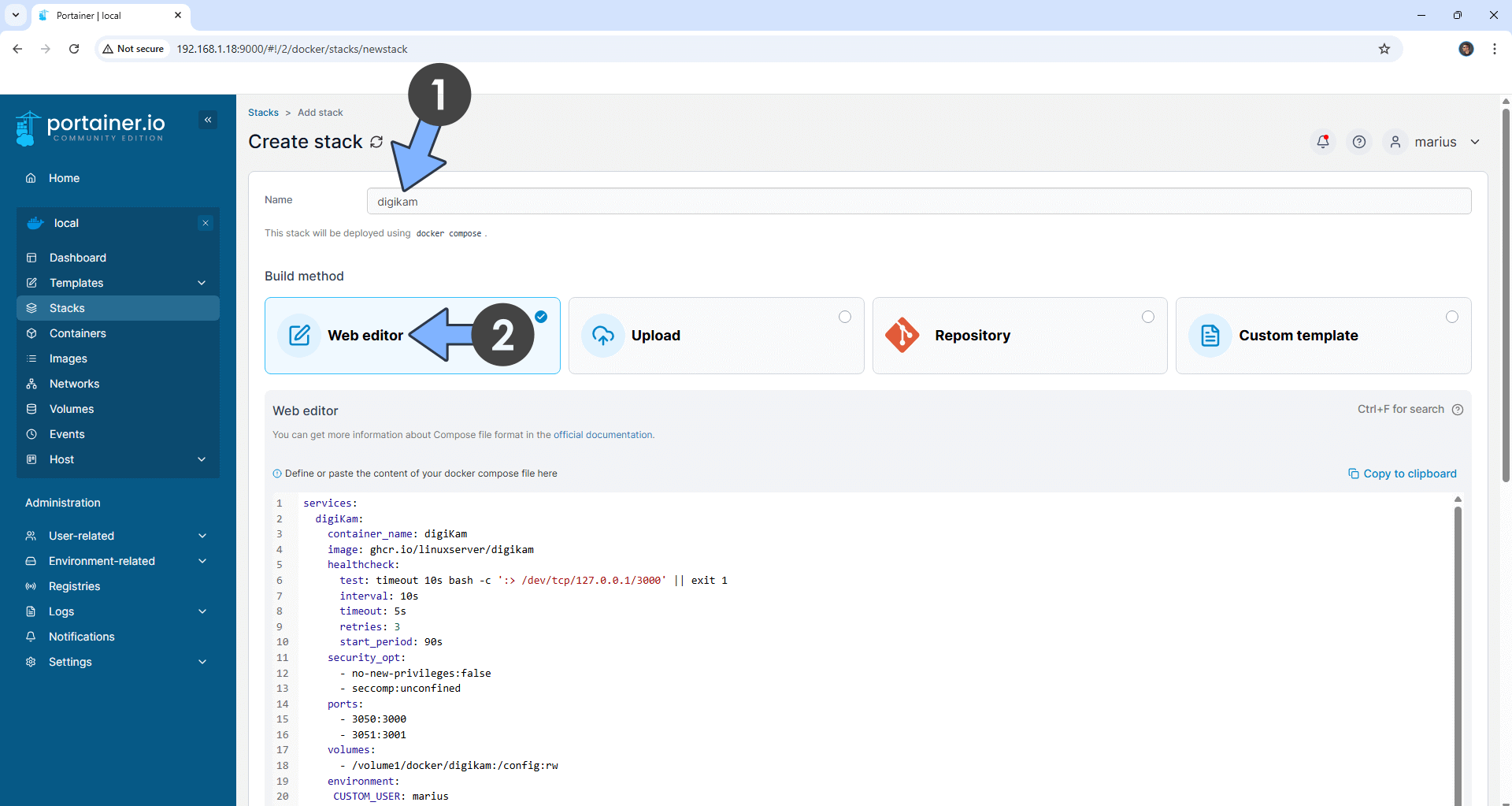
STEP 6
Scroll down the page until you see a button called Deploy the stack. Click on it. Follow the instructions in the image below. The installation process can take up to a few minutes. It will depend on your Internet speed connection.

STEP 7
If everything goes right, you will see this message at the top right of your screen: “Success Stack successfully deployed“.
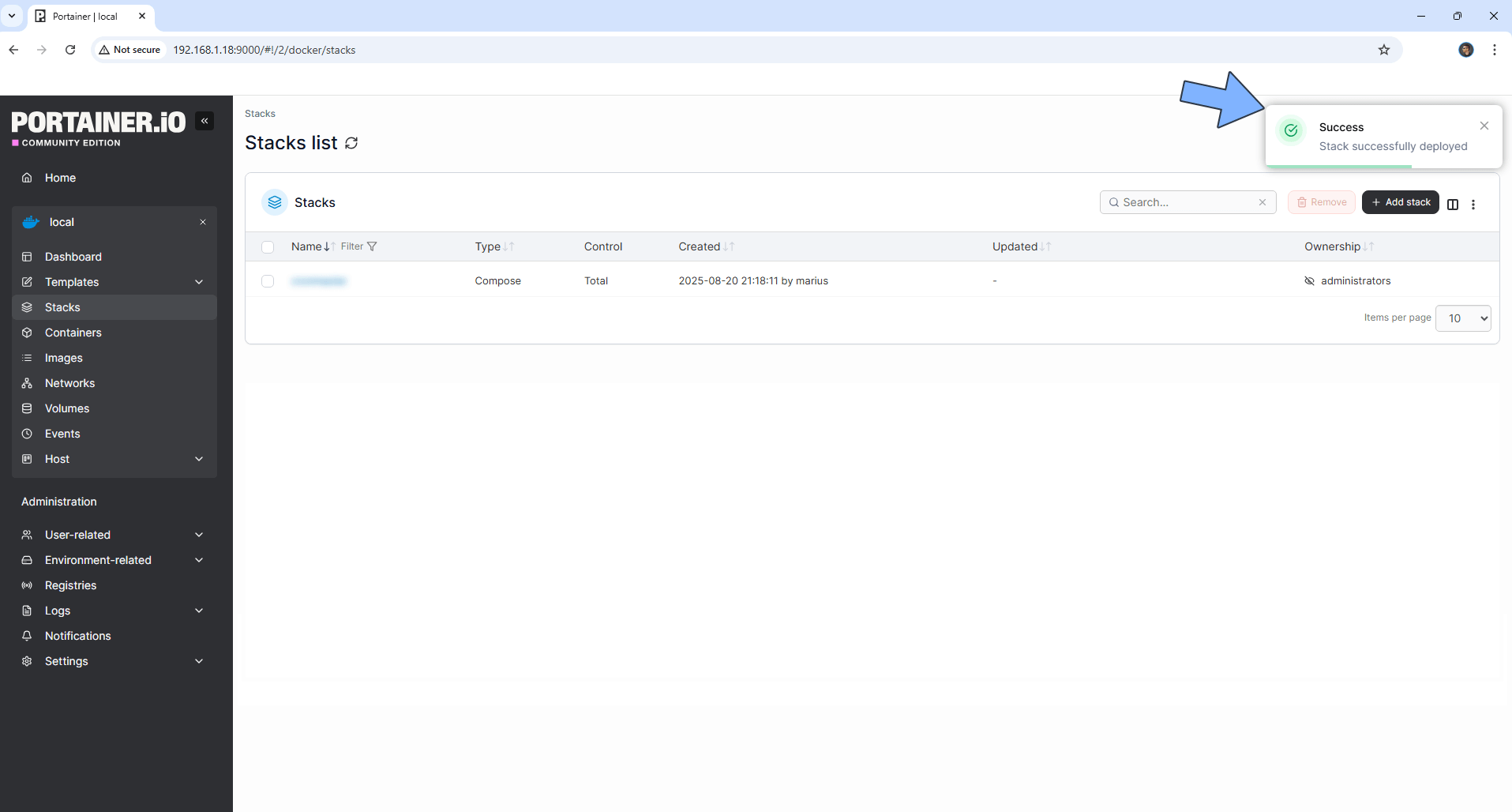
STEP 8
🟢Please Support My work by Making a Donation. Almost 99,9% of the people that install something using my guides forget to support my work, or just ignore STEP 1. I’ve been very honest about this aspect of my work since the beginning: I don’t run any ADS, I don’t require subscriptions, paid or otherwise, I don’t collect IPs, emails, and I don’t have any referral links from Amazon or other merchants. I also don’t have any POP-UPs or COOKIES. I have repeatedly been told over the years how much I have contributed to the community. It’s something I love doing and have been honest about my passion since the beginning. But I also Need The Community to Support me Back to be able to continue doing this work.
STEP 9
The installation process can take up to a few seconds/minutes. It will depend on your Internet speed connection. Now open your browser and type in https://Synology-ip-address:3051
Keep in mind, if you type in http:// this will not work. It’s mandatory to use https://
Click Advanced. Follow the instructions in the image below.
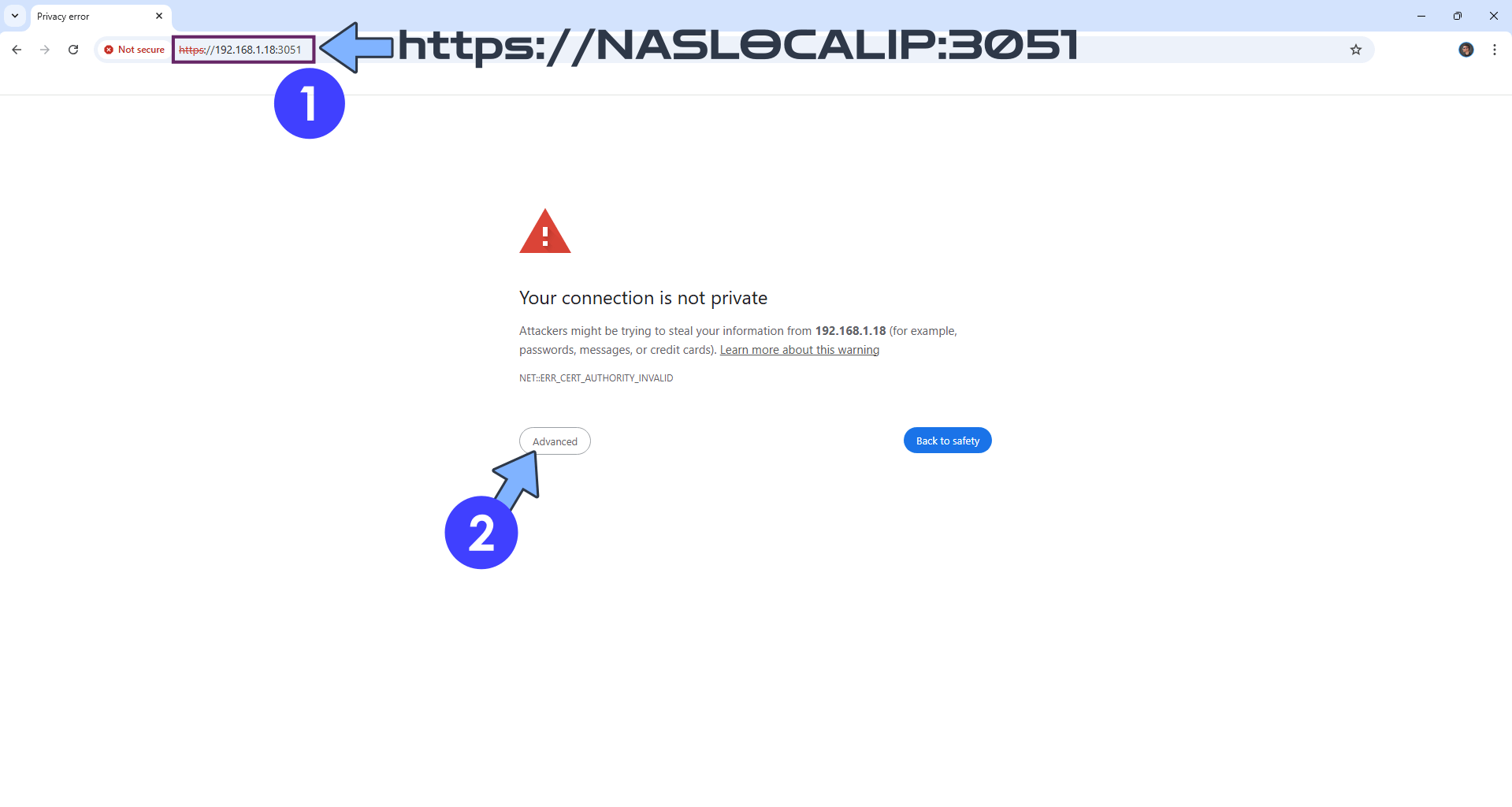
STEP 10
Click Proceed. Follow the instructions in the image below.

STEP 11
If everything goes right, you will see the digiKam Login page. Type in your own CUSTOM_USER and PASSWORD that you have previously created at STEP 5 then click Sign In. Follow the instructions in the image below.
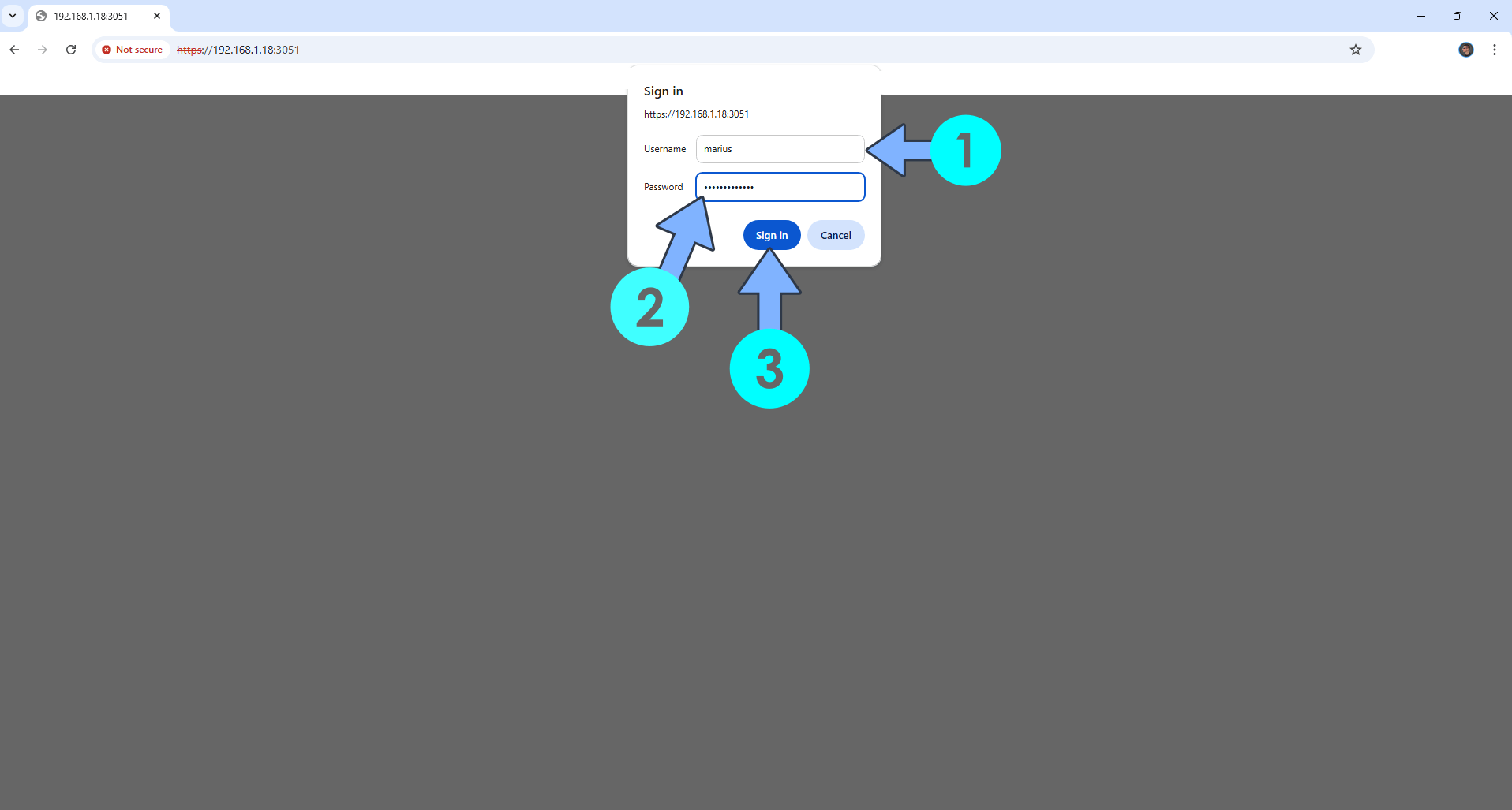
STEP 11
Click Next. Follow the instructions in the image below.

STEP 12
Click Next. Follow the instructions in the image below.

STEP 13
A new pop up window will open. Click Yes. Follow the instructions in the image below.
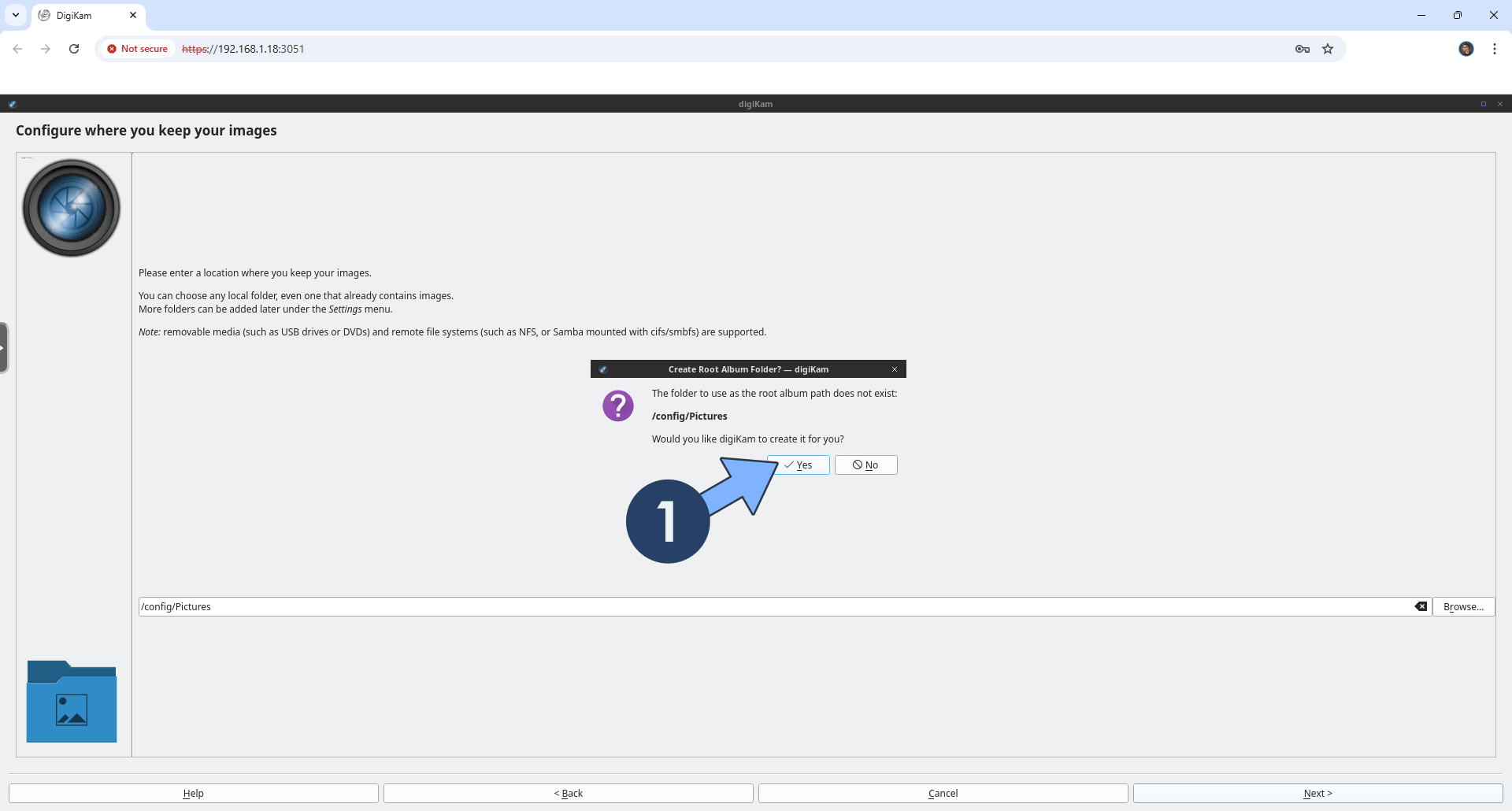
STEP 14
At the top right of the page, select SQLite then click Next. Follow the instructions in the image below.
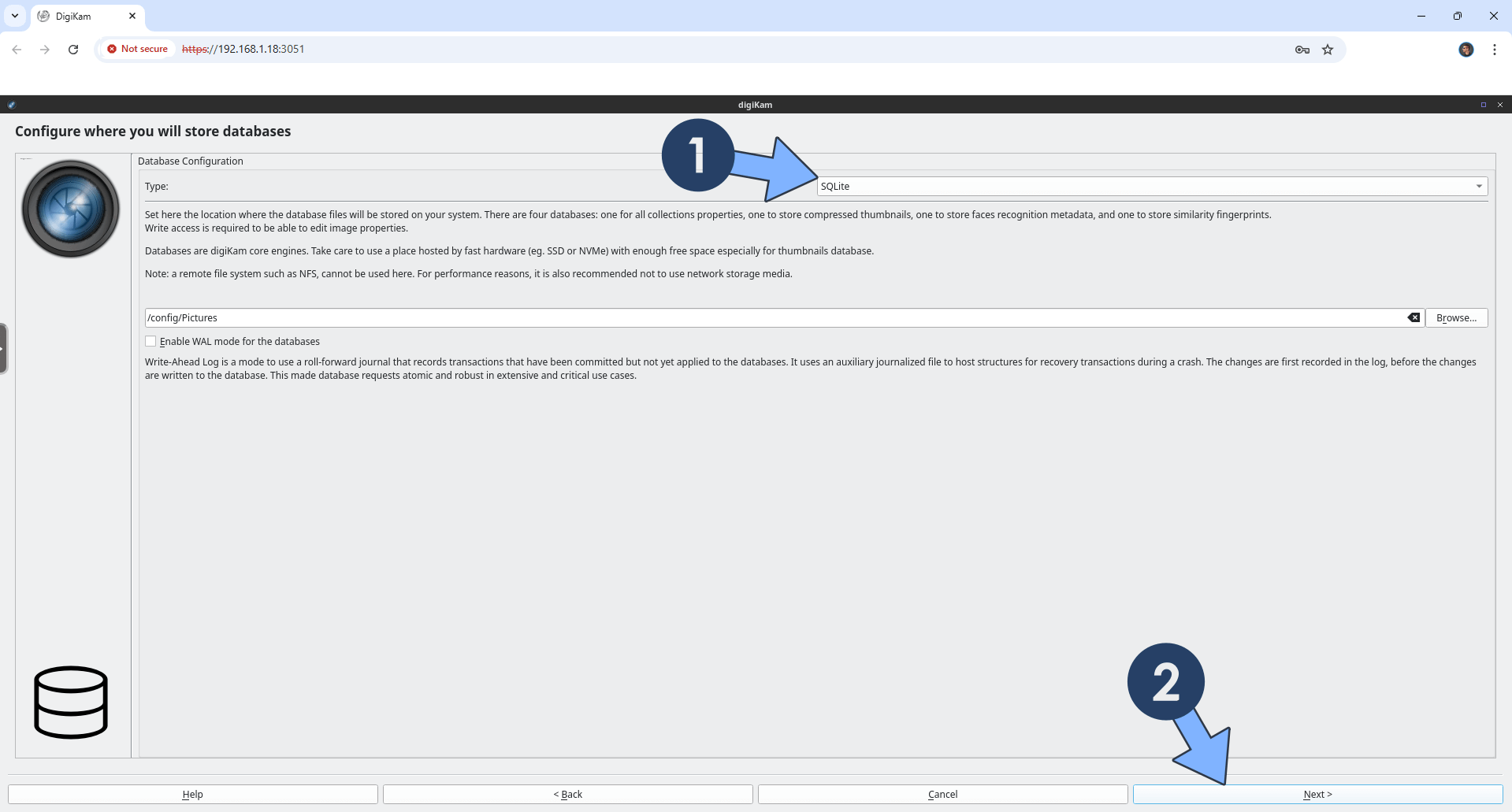
STEP 15
Select Open directly, with adjustments made automatically. Click Next. Follow the instructions in the image below.
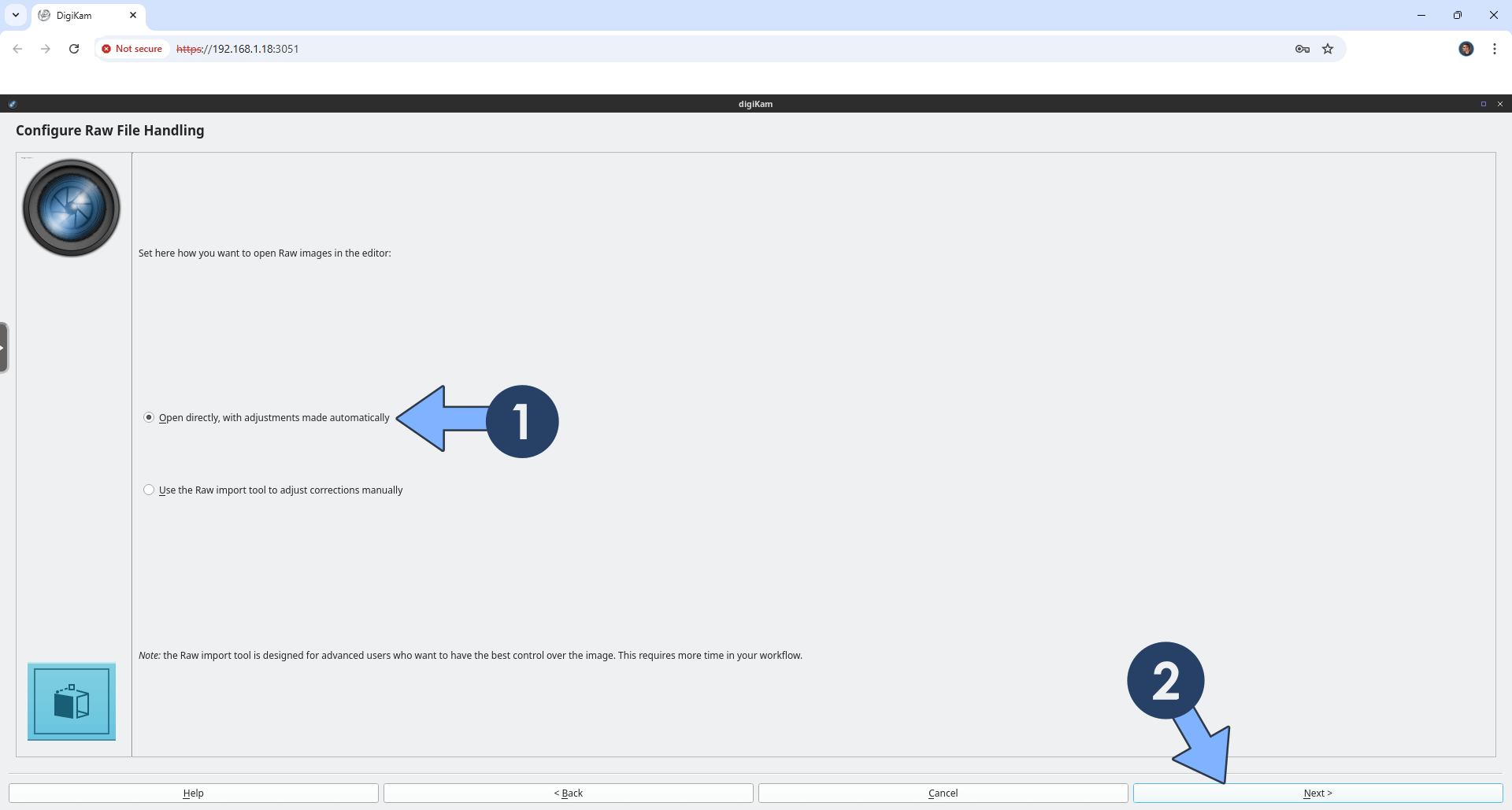
STEP 16
Select Do nothing. Click Next. Follow the instructions in the image below.
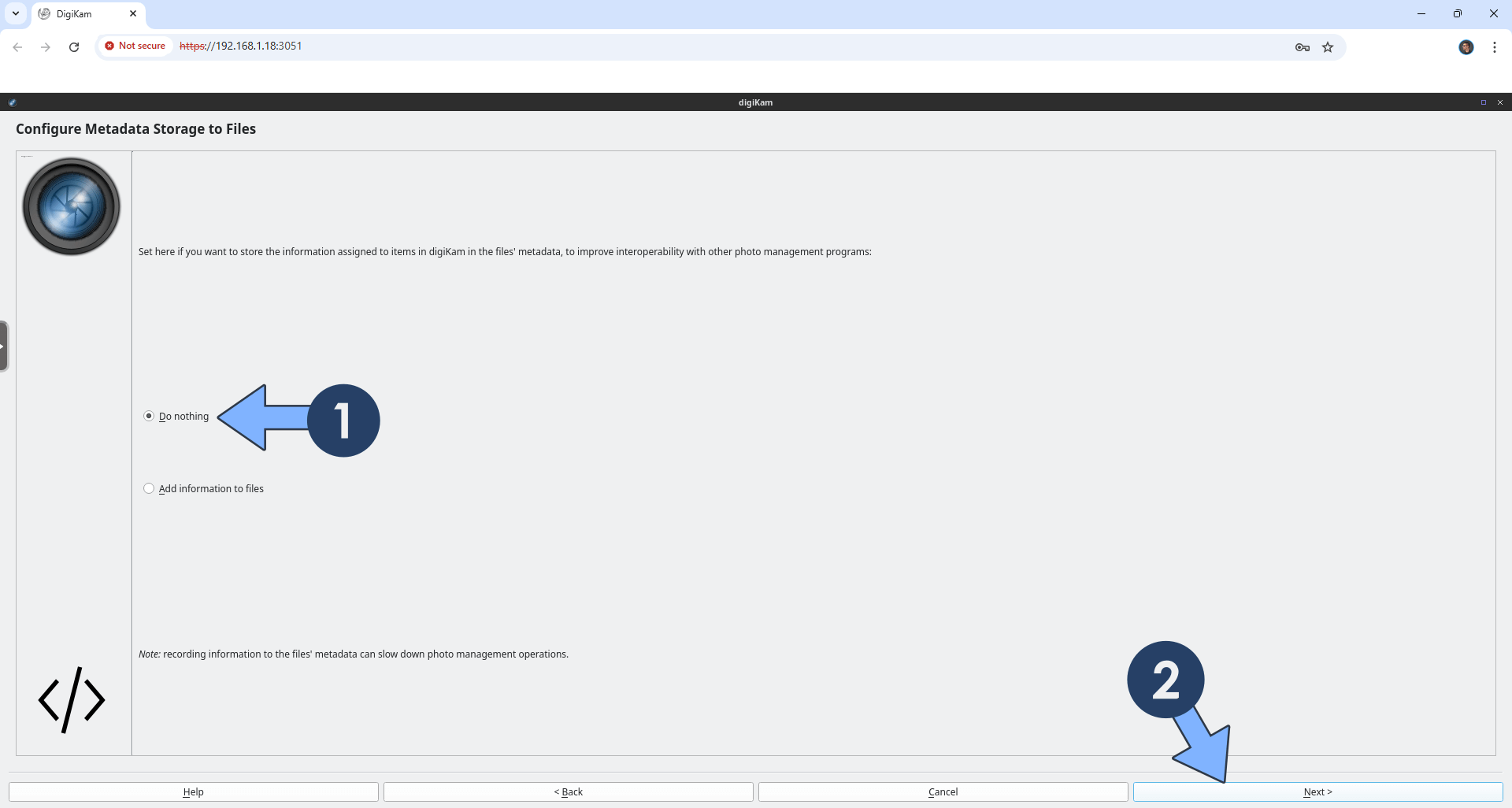
STEP 17
Select Load reduced version of image. Click Next. Follow the instructions in the image below.
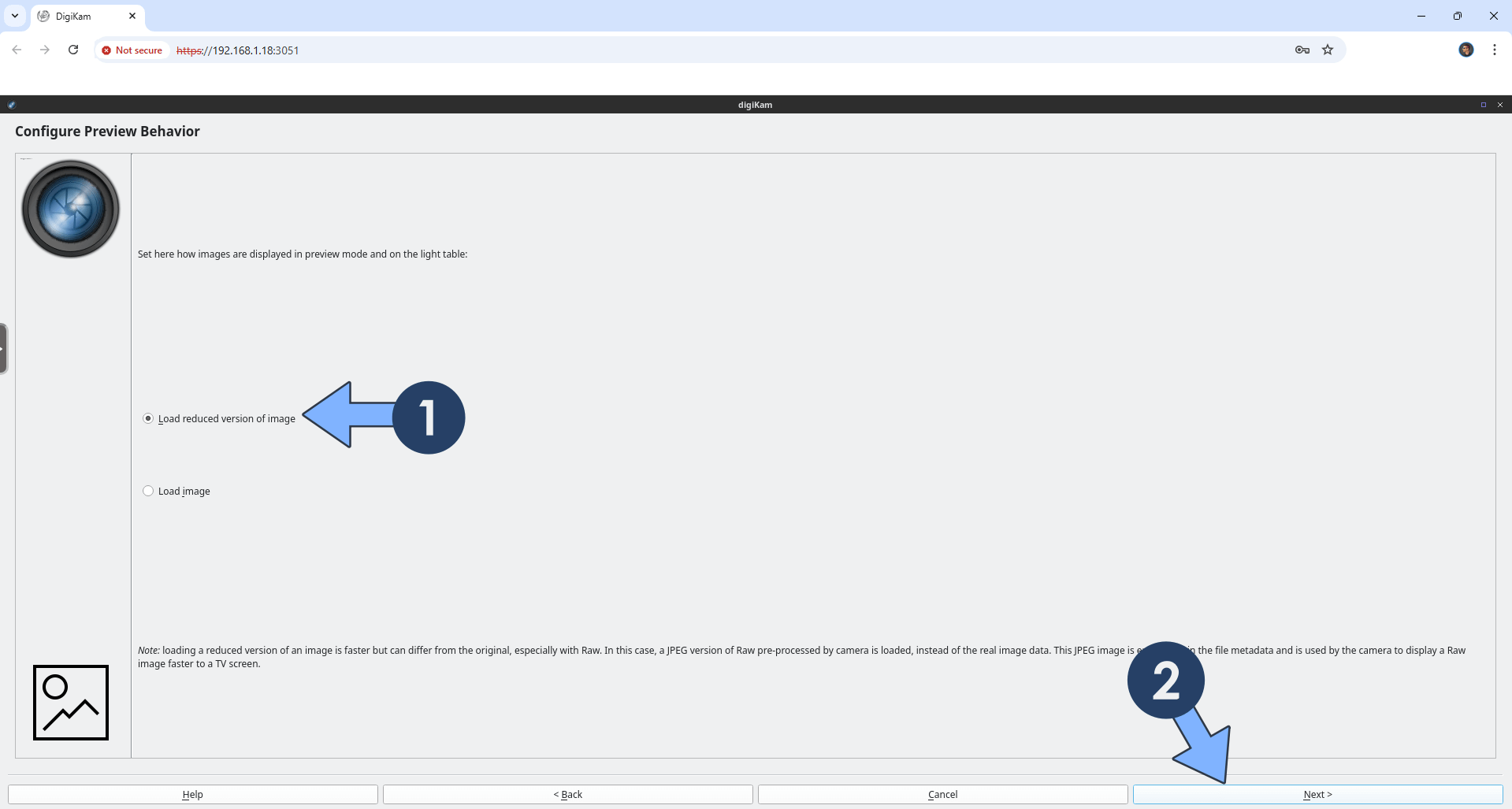
STEP 18
Select Open a preview. Click Next. Follow the instructions in the image below.

STEP 19
Select Use Tooltips. Click Next. Follow the instructions in the image below.

STEP 20
Click Finish. Follow the instructions in the image below.

STEP 21
Download Required Files. Click Download. Follow the instructions in the image below.
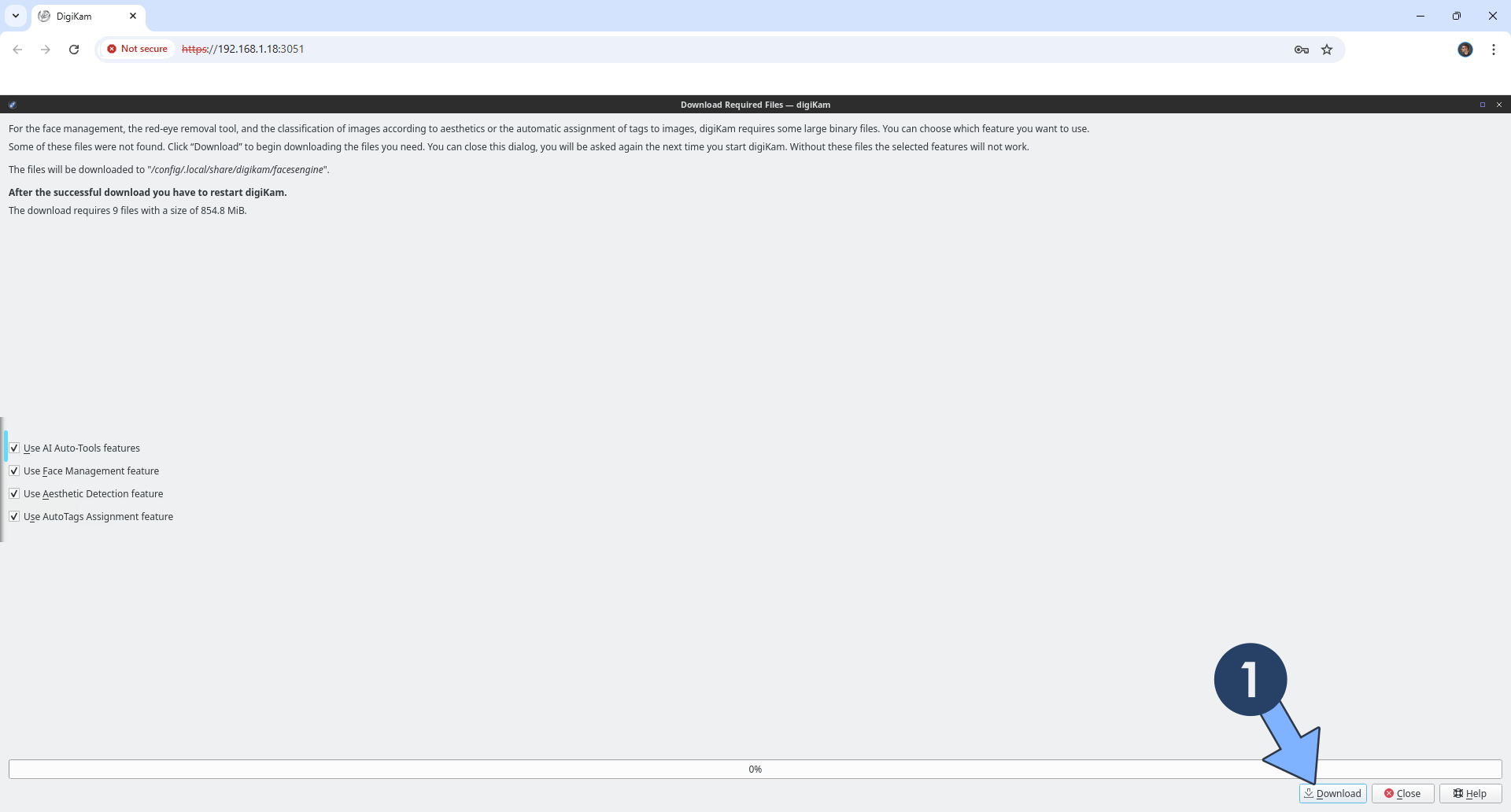
STEP 22
Wait until all files are downloaded successfully. Follow the instructions in the image below.

STEP 23
Once all files are downloaded successfully, click OK. Follow the instructions in the image below.
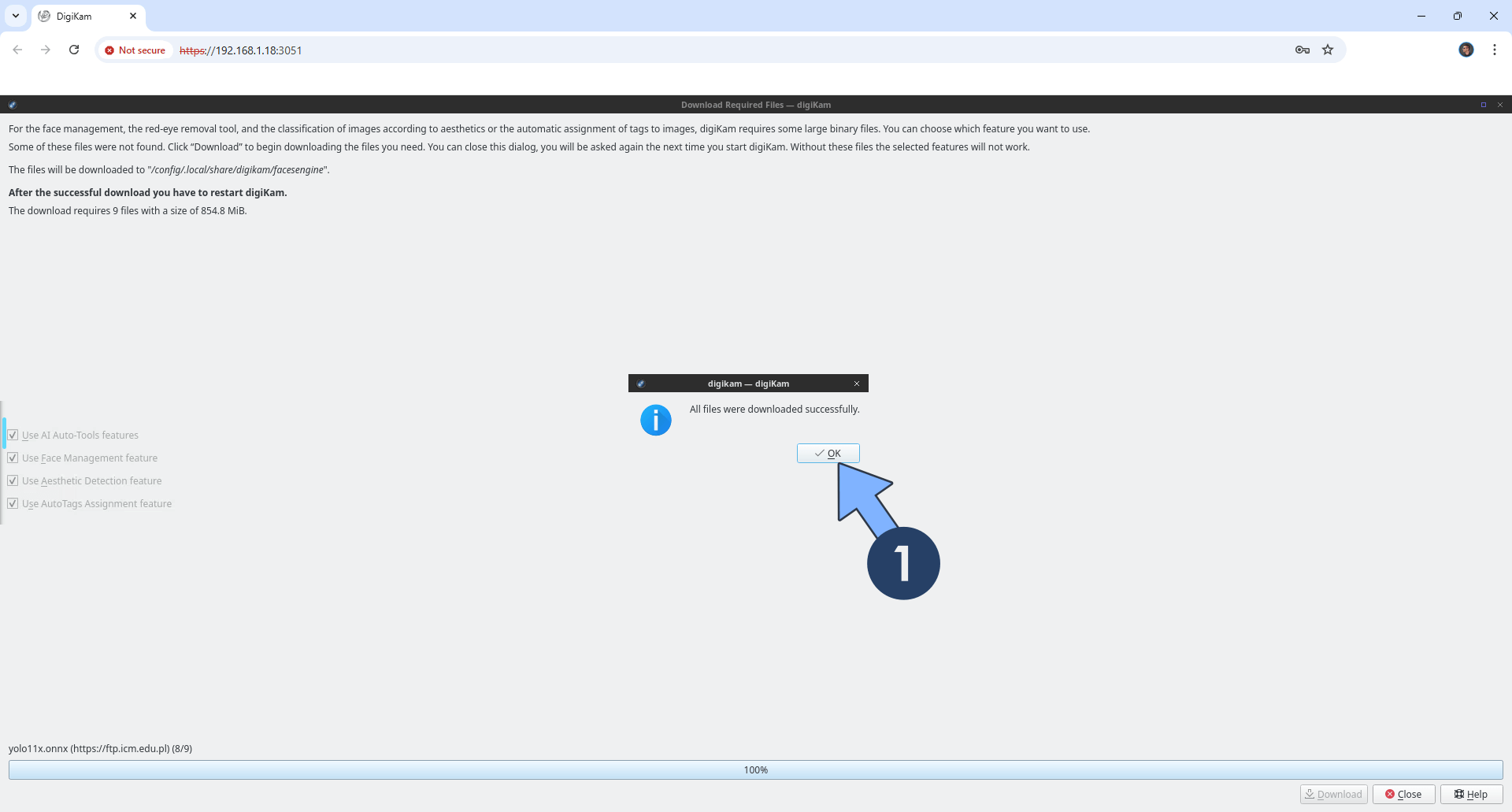
STEP 24
Upload your own pictures in docker / digikam / Pictures. Follow the instructions in the image below.

Upload Photo Files. Follow the instructions in the image below.
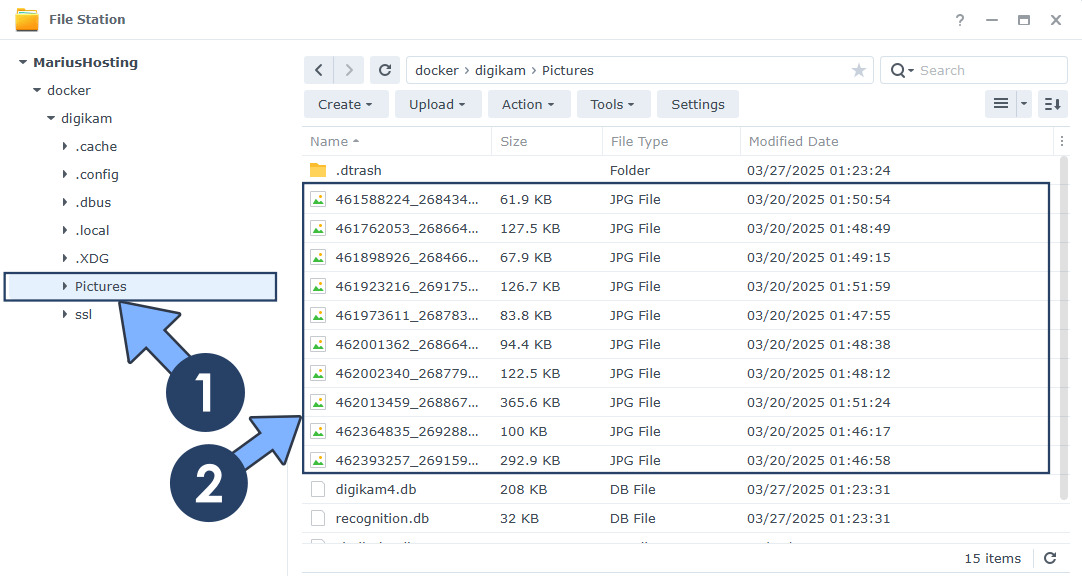
STEP 25
In Portainer, select the digiKam container, then click Restart. Note: the container needs to be restarted in order for you to be able to see your pictures. Follow the instructions in the image below.
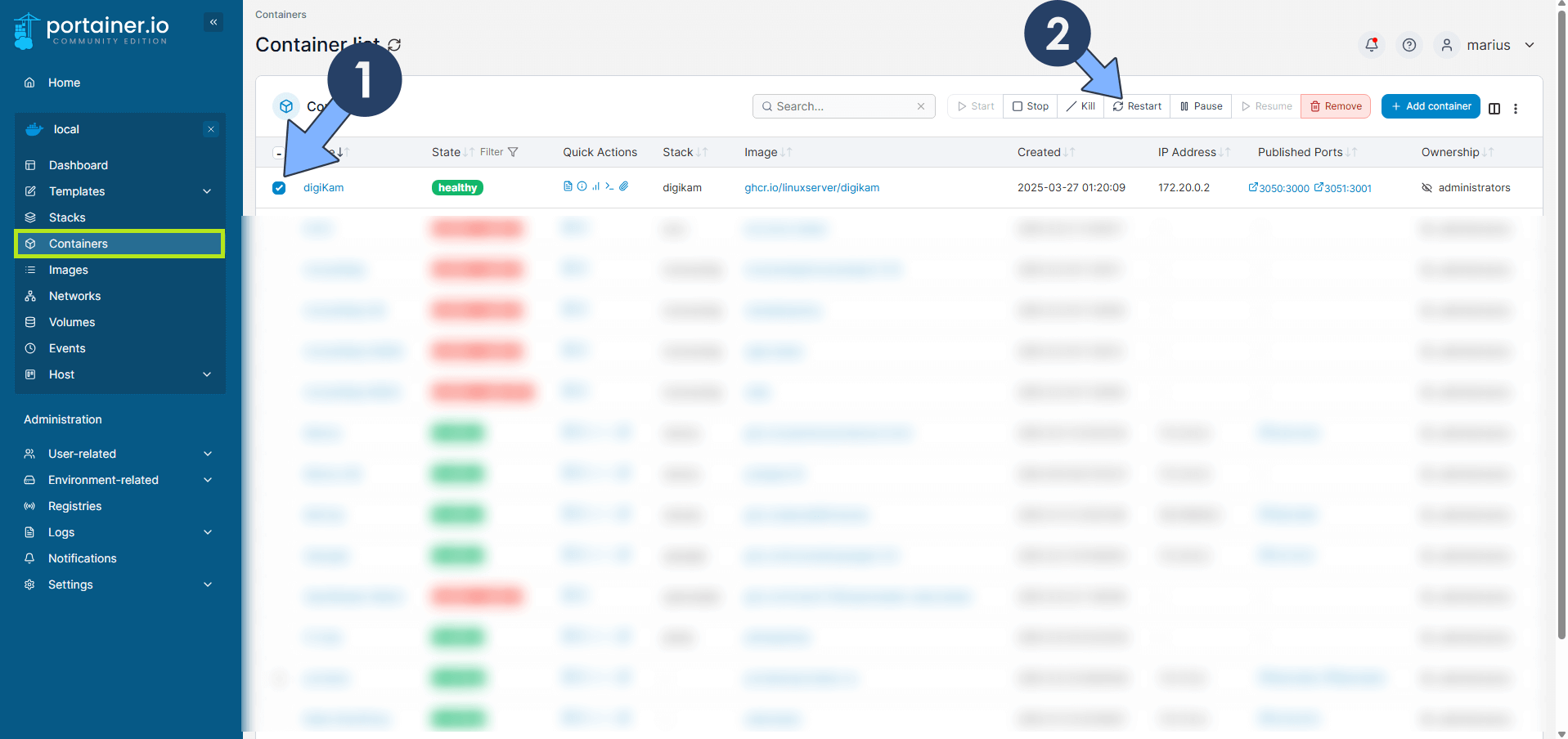
STEP 26
Now open your browser and type in https://Synology-ip-address:3051
Keep in mind, if you type in http:// this will not work. It’s mandatory to use https://
Click Advanced then Proceed. Follow the instructions in the image below.

STEP 27
Edit your own pictures!
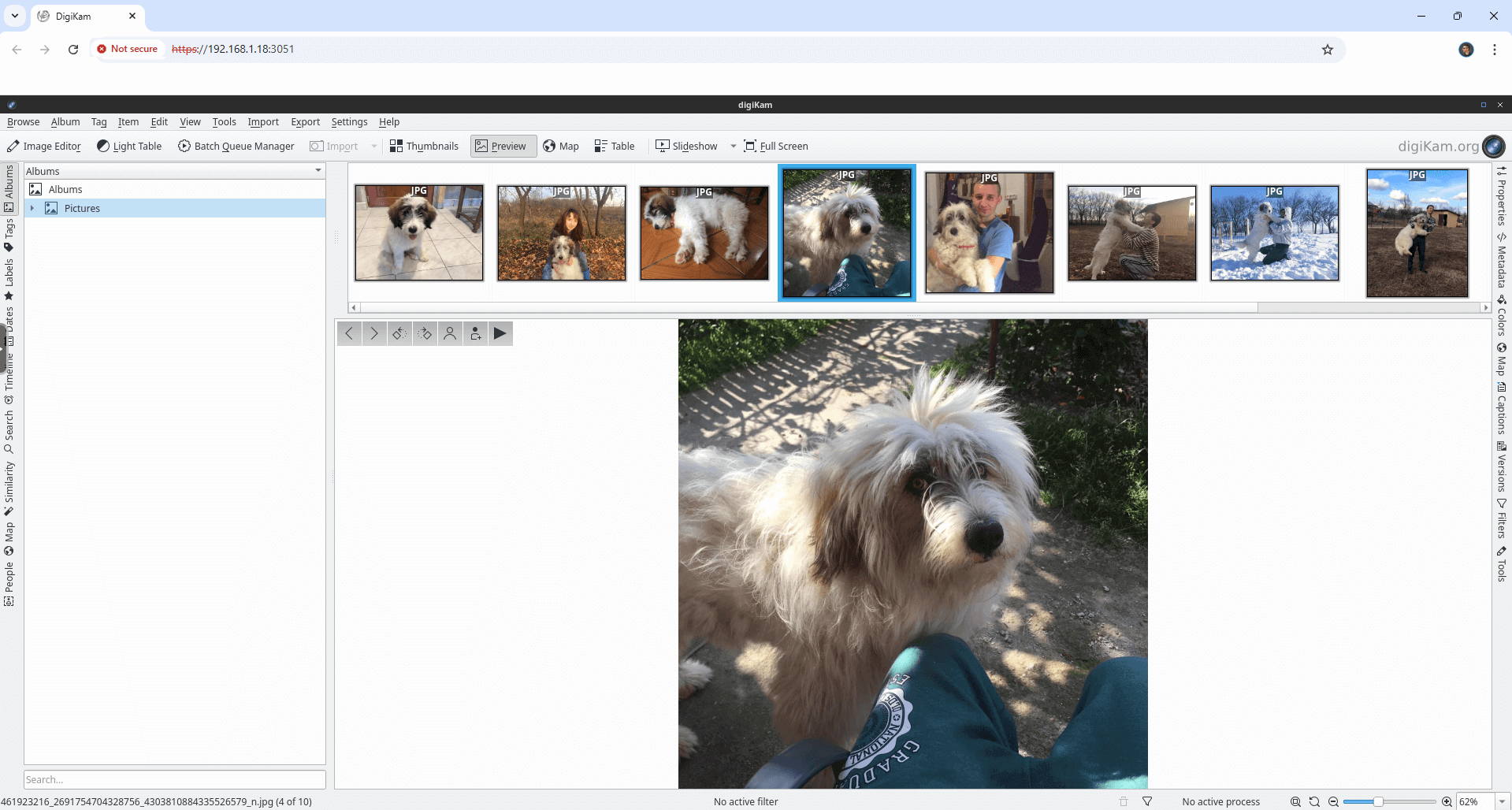
STEP 28
digiKam at a glance!
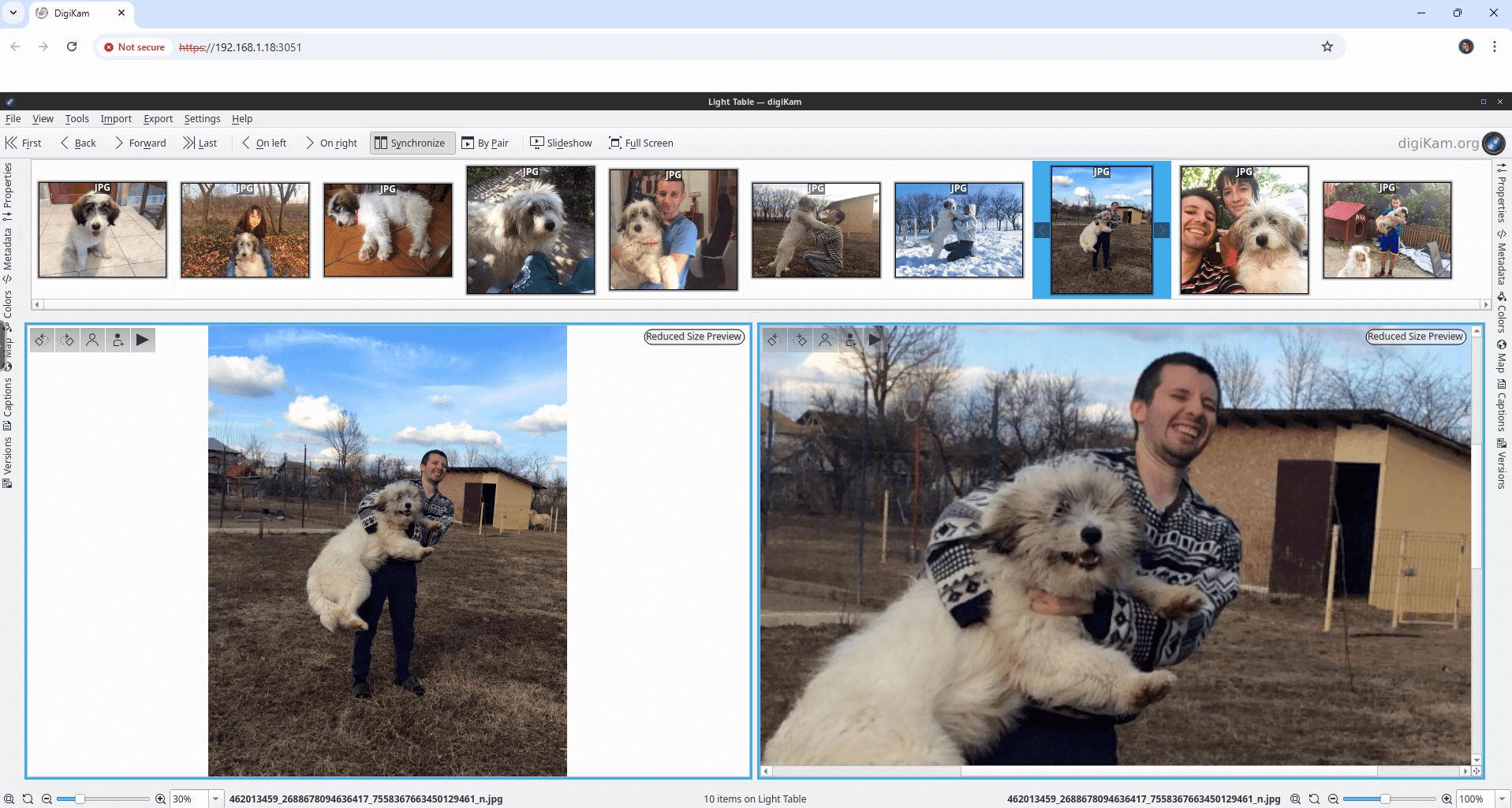
STEP 29
You can also switch the digiKam theme to Dark. Follow the instructions in the image below.
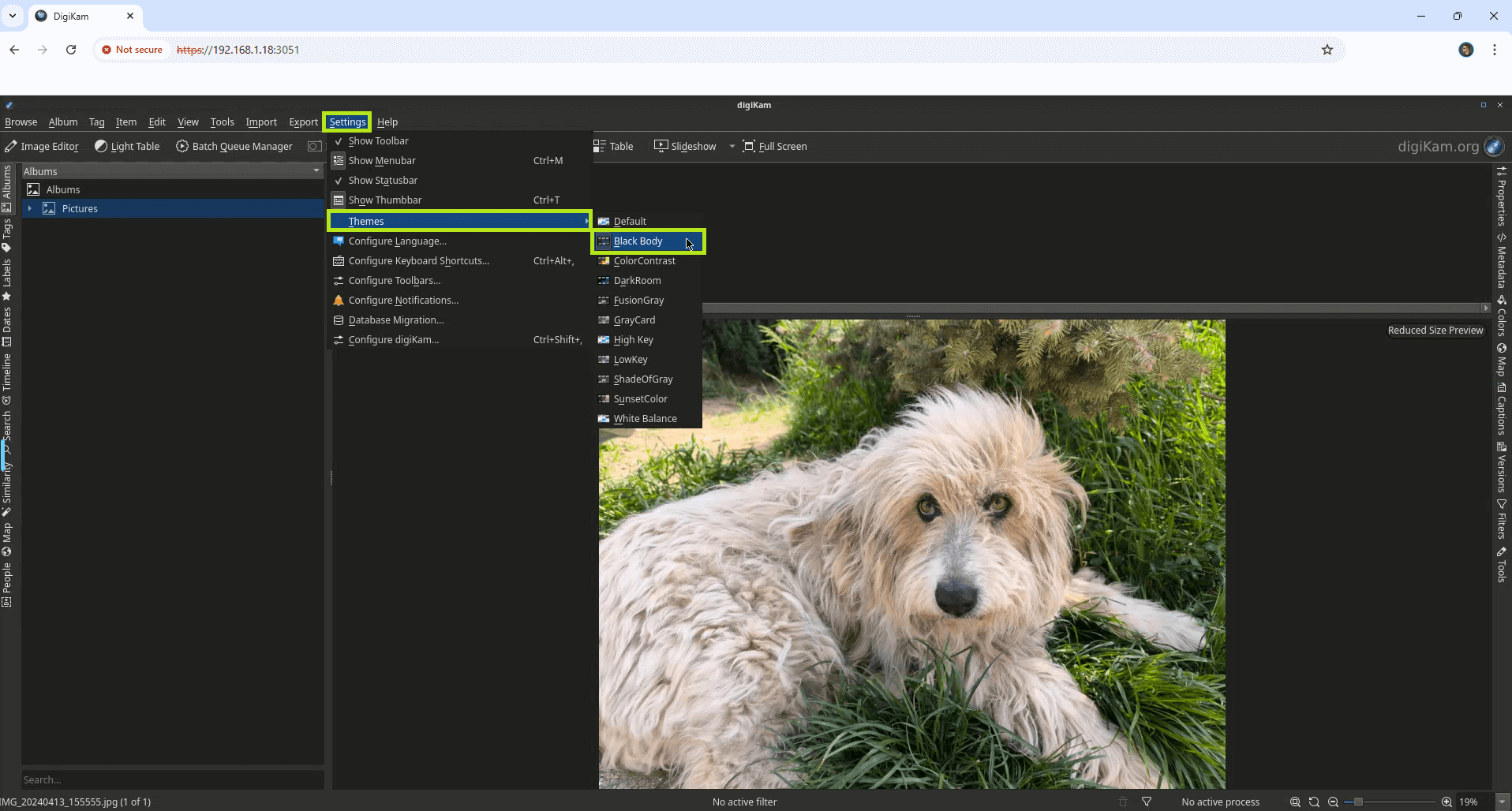
Enjoy digiKam!
Note: If you want to run the digiKam container over HTTPS/SSL/INTERNET, check How to Run Docker Containers Over HTTPS. In order to make digiKam work over https, it’s also mandatory to set up WebSocket.
If you encounter issues by using this container, make sure to check out the Common Docker issues article.
Note: Can I run Docker on my Synology NAS? See the supported models.
Note: How to Back Up Docker Containers on your Synology NAS.
Note: Find out how to update the digiKam container with the latest image.
Note: How to Free Disk Space on Your NAS if You Run Docker.
Note: How to Schedule Start & Stop For Docker Containers.
Note: How to Activate Email Notifications.
Note: How to Add Access Control Profile on Your NAS.
Note: How to Change Docker Containers Restart Policy.
Note: How to Use Docker Containers With VPN.
Note: Convert Docker Run Into Docker Compose.
Note: How to Clean Docker.
Note: How to Clean Docker Automatically.
Note: Best Practices When Using Docker and DDNS.
Note: Some Docker Containers Need WebSocket.
Note: Find out the Best NAS Models For Docker.
Note: Activate Gmail SMTP For Docker Containers.
This post was updated on Friday / August 22nd, 2025 at 1:36 AM
